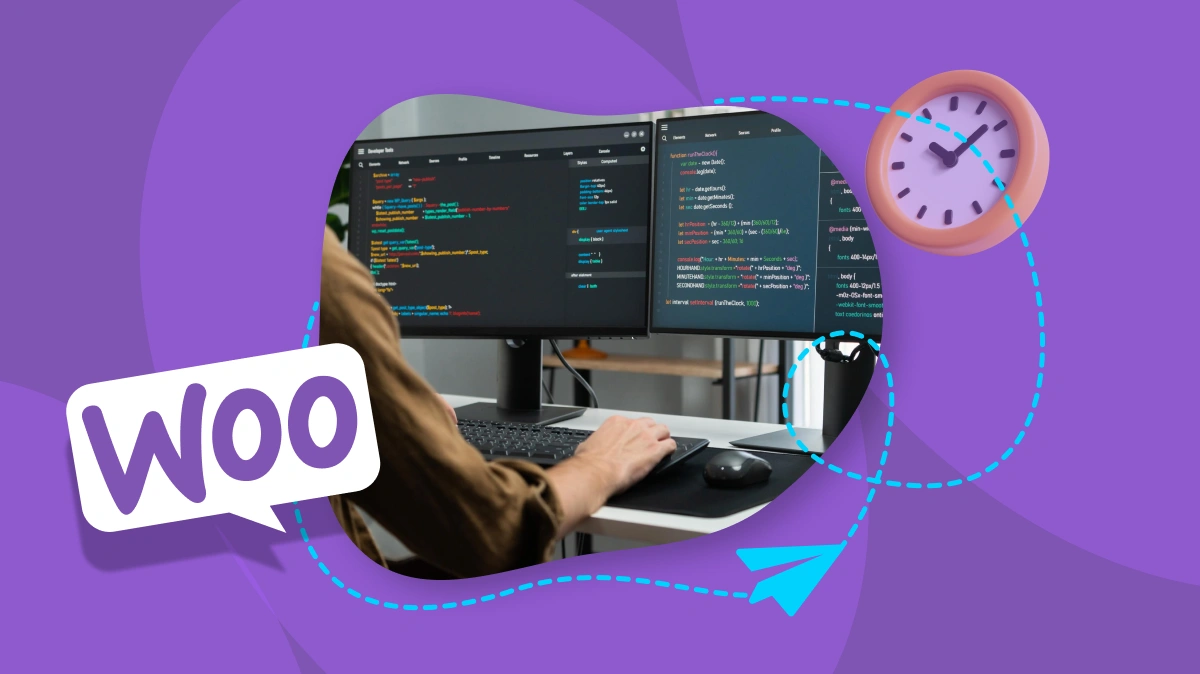
Як інтегрувати штучний інтелект у мобільний додаток у 2025 році
Штучний інтелект у мобільному додатку у 2025 році — це вже не «вау-функція», а обов’язковий інструмент, який підвищує конверсію на 30–300 %, середній чек на 35 % і LTV у 3 рази. Дізнайтесь, як інтегрувати AI у ваш додаток за 2–8 тижнів без власної команди data scientist, які готові сервіси використовувати та скільки це коштує. Повний покроковий план + реальні приклади коду!
Як інтегрувати штучний інтелект у мобільний додаток у 2025 році
За прогнозом Gartner, до кінця 2025 року 80 % усіх успішних мобільних додатків матимуть хоча б одну функцію на базі штучного інтелекту. AI у мобільному додатку — це вже не розкіш, а конкурентна необхідність. У цій статті — повний актуальний гайд 2025 року: від вибору підходу до готових прикладів коду.
ТОП-10 AI-функцій, які треба мати у 2025 році
- Персональні рекомендації — +30–50 % до середнього чеку
- Розумний пошук за фото, голосом і текстом
- Чат-бот 24/7 з розумінням контексту
- Прогнозування відтоку користувачів
- Динамічне ціноутворення та персональні знижки
- AR-примірка з AI-аналізом
- Автоматична модерація відгуків і фото
- Розумна сегментація push-повідомлень
- AI-агенти, які самі роблять покупки
- On-device AI без інтернету
3 способи інтеграції AI — обирайте свій
| Спосіб | Час впровадження | Вартість | Для кого |
|---|---|---|---|
| Готові API (OpenAI, Google Vertex, Anthropic) | 1–3 тижні | $500–$5000/міс | 95 % додатків |
| No-code платформи (Bubble AI, Glide AI, Adalo) | 3–14 днів | $99–$999/міс | Стартапи, MVP |
| Власна модель | 6–18 місяців | від $100 000 | Тільки гіганти |
Крок 1. Персональні рекомендації через OpenAI GPT-4o
// JavaScript / React Native — запит до GPT-4o
const response = await fetch('https://api.openai.com/v1/chat/completions', {
method: 'POST',
headers: {
'Authorization': 'Bearer sk-your-key-here',
'Content-Type': 'application/json'
},
body: JSON.stringify({
model: "gpt-4o",
messages: [
{
role: "system",
content: "Ти — персональний стиліст преміум-магазину. Користувач купив: чорні кросівки Nike, сині джинси Levi’s. Запропонуй 3 ідеально сумісні товари з каталогу."
},
{ role: "user", content: JSON.stringify(userPurchaseHistory) }
],
temperature: 0.7,
max_tokens: 400
})
});
const data = await response.json();
console.log(data.choices[0].message.content);
Крок 2. Пошук за фото через Google ML Kit
// React Native
import { GoogleCloudVision } from '@react-native-ml-kit/google-cloud-vision';
const analyzeImage = async (photoUri) => {
const result = await GoogleCloudVision.detectFromImage(photoUri);
const labels = result.labels.map(label => label.text.toLowerCase());
searchProductsByKeywords(labels);
};
Крок 3. Чат-бот на базі Anthropic Claude 3 Sonnet
// Flutter + Dart
final response = await http.post(
Uri.parse('https://api.anthropic.com/v1/messages'),
headers: {
'x-api-key': 'your-anthropic-key',
'anthropic-version': '2023-06-01',
'content-type': 'application/json'
},
body: jsonEncode({
"model": "claude-3-sonnet-20240229",
"max_tokens": 1024,
"temperature": 0.5,
"messages": [
{"role": "user", "content": userMessage}
]
})
);
final botReply = jsonDecode(response.body)['content'][0]['text'];
Крок 4. Прогнозування відтоку на пристрої (TensorFlow Lite)
// React Native — модель працює без інтернету (300 КБ)
import Tflite from 'tflite-react-native';
const tflite = new Tflite();
await tflite.loadModel({
model: 'assets/models/churn_prediction.tflite',
labels: 'assets/models/labels.txt'
});
const predictions = await tflite.runModelOnImage({
path: userBehaviorVectorPath,
imageMean: 0.0,
imageStd: 255.0,
numResults: 2
});
if (predictions[0].confidence > 0.75) {
triggerRetentionPush();
}
Крок 5. Голосовий пошук через OpenAI Whisper
// Конвертація голосу в текст
const formData = new FormData();
formData.append('file', {
uri: audioFileUri,
type: 'audio/m4a',
name: 'voice.m4a'
});
formData.append('model', 'whisper-1');
const result = await fetch('https://api.openai.com/v1/audio/transcriptions', {
method: 'POST',
headers: { 'Authorization': 'Bearer sk-...' },
body: formData
});
const text = result.data.text;
performSearch(text);
Найкращі готові AI-сервіси 2025 року
- OpenAI GPT-4o — універсальний лідер
- Google Vertex AI — найкращі рекомендації
- Anthropic Claude 3 — максимальна безпека
- Cohere / Mistral / Grok — бюджетні альтернативи
- Apple Intelligence & Google Gemini Nano — on-device AI
Вартість інтеграції AI у 2025 році
| MVP з готовими API | $1500–$8000 одноразово + $300–$2000/міс |
| No-code рішення | $99–$999/міс |
| Власна модель + команда | від $100 000 + $20k/міс |
Тренди AI у мобільних додатках 2025–2026
- On-device AI (працює без інтернету)
- Мультимодальні моделі (текст + фото + голос)
- AI-агенти, які самостійно роблять покупки
- Генеративний UI під кожного користувача
- Персональні голосові асистенти всередині додатку
Штучний інтелект у мобільному додатку — це вже не майбутнє, а реальність 2025 року. Почніть з однієї простої функції (рекомендації або чат-бот) — і вже за 2–4 тижні побачите зростання конверсії на 30–100 %, середнього чеку на десятки відсотків та суттєве зниження відтоку клієнтів!

MVP mobile app is the fastest way to validate a startup idea. Discover why **startups** launch **MVPs**, how to cut **development time** to 4–8 weeks, and attract **investors** and **users**. Optimize **ASO** for **organic traffic**!
What is an MVP Mobile App and Why It Matters for Startups?
MVP (Minimum Viable Product) is a minimal version of a **mobile app** with core features to test market demand. Y Combinator reports 42% of **startups** fail due to no market need. **MVP** prevents this by gathering **user feedback** in 1–2 months. **Startups** use **MVP** to:
- Validate ideas
- Attract **investors**
- Enter market fast
- Save **budget**
ASO Tip: Use keywords like "MVP mobile app", "startup app", "fast app development" in **App Store** descriptions for **organic traffic**.
1. Idea Validation: Testing Market Demand
MVP tests hypotheses without full development. **Startups** launch a basic version and track:
- Conversion: sign-up → first action
- Retention: DAU/MAU
- Reviews: **App Store** ratings
Example: Dropbox MVP was a video — 75,000 emails in one day.
2. Attracting Investors: From Idea to Funding
MVP is the best pitch for **investors**. Instead of slides — real metrics:
- 10,000 downloads - 25% retention on day 7 - 4.5* in **App Store**
**Startups** with **MVP** raise funds 3x more often (CB Insights).
3. Fast Launch: From Idea to Market in 4–8 Weeks
MVP cuts **development time** by 70%:
- Flutter / React Native: cross-platform
- No-code: Bubble, Adalo
- Ready APIs: Stripe, Firebase
Example: Uber MVP launched for iPhone in 6 weeks.
4. Budget Saving: $10,000 Instead of $100,000
MVP costs $5,000–$25,000, full app — $50,000–$200,000+.
| Stage | MVP | Full App |
|---|---|---|
| Design | $2,000 | $15,000 |
| Development | $8,000 | $80,000 |
| Testing | $1,000 | $10,000 |
5. Feedback Collection: Data-Driven Iterations
MVP enables fast fixes:
- A/B testing: buttons, copy
- Analytics: Mixpanel, Amplitude
- Surveys: in-app forms
6. Early Users: Organic Growth
MVP attracts **early adopters** who:
- Share the app
- Leave reviews
- Become brand advocates
ASO: title, icon, screenshots — +300% **organic traffic**.
7. Scaling: From MVP to Full Product
After validation, **MVP** scales:
MVP → v1.0 → v2.0 - User profile - Push notifications - AI recommendations - AR/VR
Successful MVP Case Studies
- Instagram: MVP — photos + filters
- Airbnb: MVP — 3 listings in SF
- Spotify: MVP — desktop for 100 users
MVP Launch Tips
- Define 1 core feature
- Go cross-platform
- Integrate analytics from day one
- Launch ASO immediately
- Collect emails for updates
MVP mobile app is not a "prototype" — it’s a real product that brings **users**, **funding**, and **data**. **Startups** with **MVP** survive 5x longer. Launch today!

Mobile app development is a key investment, but how much does it cost? This article breaks down pricing factors — from platform to design and integrations. Discover how to optimize costs and drive organic traffic through ASO.
Why Understanding Pricing Factors Matters for App Development?
Mobile app development ranges from $5,000 to $500,000+. Clutch reports average costs of $50,000–$150,000. Pricing factors impact budget, launch time, and ROI. Core components:
- Platform: iOS, Android, or cross-platform.
- Design: UX/UI, prototyping.
- Functionality: Basic or complex.
- Integrations: APIs, payments, analytics.
- Maintenance: Updates, scaling.
ASO Tip: Use keywords like "app development cost", "pricing factors", "mobile app price" in App Store descriptions for organic traffic.
1. Platform: iOS, Android, or Cross-Platform
Platform is a major pricing factor. Single-platform is cheaper than dual.
| Platform | Cost | Time |
|---|---|---|
| iOS (Swift) | $30,000–$100,000 | 3–6 months |
| Android (Kotlin) | $25,000–$90,000 | 3–6 months |
| Cross-Platform (Flutter/React Native) | $40,000–$150,000 | 4–8 months |
Recommendation: Use Flutter or React Native to save up to 40%.
2. Design: UX/UI and Prototyping
Design accounts for 20–30% of total cost. Good UX boosts conversion by 200%.
- Prototype (Figma): $2,000–$10,000
- UI Design: $5,000–$25,000
- Animations: $3,000–$15,000
How to Save?: Use pre-built UI kits (Material Design, Human Interface).
3. Functionality: From MVP to Complex Systems
Functionality is a core pricing factor. More features = higher cost.
| Feature | Cost |
|---|---|
| Login/Registration | $1,000–$5,000 |
| Push Notifications | $500–$3,000 |
| Payments (Stripe) | $2,000–$8,000 |
| AI Recommendations | $10,000–$50,000 |
| AR/VR | $20,000–$100,000 |
4. Integrations: APIs, Analytics, Cloud
Integrations add 15–25% to the cost.
- Google Analytics: $500–$2,000
- Firebase: $1,000–$5,000
- CRM (HubSpot): $3,000–$10,000
- ERP: $10,000–$50,000
5. Team and Development Region
Cost varies by region:
| Region | Hourly Rate |
|---|---|
| USA/Canada | $100–$200 |
| Western Europe | $80–$150 |
| Eastern Europe (Ukraine) | $30–$70 |
| India | $20–$50 |
Recommendation: Choose Ukraine — best price-quality balance.
6. Testing, Publishing, and Maintenance
Don’t forget hidden costs:
- Testing: $5,000–$20,000
- Publishing (App Store): $99/year
- Maintenance: 15–20% of cost annually
Cost Calculation Example
E-commerce MVP (iOS + Android, Flutter): - Design: $8,000 - Development: $45,000 - Testing: $7,000 - Integrations: $5,000 - Maintenance (1 year): $12,000 Total: $77,000
Trends Impacting Price
- AI/ML: +$10,000–$50,000
- 5G: Speed optimization
- PWA: App alternative
- Security: Biometrics, encryption
Tips to Optimize Costs
- Launch MVP: Test the market.
- Go cross-platform: Save up to 40%.
- Use ready solutions: UI kits, APIs.
- Plan maintenance: 20% annually.
- Invest in ASO: Drive organic traffic.
Mobile app development is a high-ROI investment. Understand pricing factors to avoid overpaying. Start with MVP and scale smart!

In today's world, native apps provide better user interaction, offering speed, personalization, and device integration. They enable businesses like restaurants, stores, and services to increase customer loyalty and sales. Native apps run faster than web versions and use AI for recommendations. This article explores how native apps improve user interaction, drive business growth, and how to optimize for organic traffic through SEO.
Why Native Apps Provide Better User Interaction?
Native apps transform user interaction, offering speed and device integration. The mobile app market is growing, with native solutions used by 80% of businesses for optimization. They offer:
- Speed: Faster loading than web versions.
- Personalization: AI for individual recommendations.
- Integration: Use of camera, GPS, and sensors.
- Loyalty: Push notifications for customer retention.
SEO Tip: Use keywords like "native apps", "user interaction", or "mobile apps" in descriptions for App Store and Google Play to attract organic traffic.
1. Speed and Performance
Native apps run faster as they are compiled for specific platforms, improving user interaction.
Benefits
- Loading: Quick opening, reducing churn.
- Performance: Optimized for devices.
- Offline Access: Work without internet.
How to Implement?
- Use Swift for iOS or Kotlin for Android.
- Integrate Firebase for offline features.
- Test on real devices.
2. Personalization of Interaction
Native apps use device data for personalization, enhancing user interaction.
Benefits
- Recommendations: AI for individual offers.
- Push Notifications: Personalized alerts.
- Loyalty: Increased customer retention.
How to Implement?
- Integrate Machine Learning for AI.
- Use OneSignal for push notifications.
- Analyze data with Google Analytics.
3. Device Integration
Native apps fully utilize device features like GPS and camera for better interaction.
Benefits
- GPS: Local recommendations.
- Camera: AR for try-ons.
- Sensors: Interactive features.
How to Implement?
- Integrate Core Location for GPS.
- Use ARCore for AR.
- Test on various devices.
4. Enhancing Loyalty
Native apps increase loyalty through convenience and personalization.
Benefits
- Loyalty Programs: Bonuses and discounts.
- Offline Access: Work without internet.
- Engagement: Increased retention.
How to Implement?
- Integrate Yotpo for loyalty.
- Use Realm for offline data.
- Analyze retention with Mixpanel.
5. SEO and Organic Traffic for Apps
Native apps integrate with **SEO**, attracting organic traffic through ASO.
Benefits
- ASO: Optimization for App Store.
- Content: Descriptions for search.
- Traffic: Increased downloads.
How to Implement?
- Optimize descriptions with keywords.
- Use App Annie for ASO.
- Integrate Google Analytics for traffic.
Trends for Native Apps
- Artificial Intelligence: AI for recommendations.
- Augmented Reality: AR for interaction.
- Voice Interface: Growing queries via voice.
- Security: Biometrics for protection.
Tips for Creating Native Apps
- Define Platforms: iOS and Android for coverage.
- Integrate AI: For personalization.
- Optimize Speed: For better interaction.
- Test: On real devices.
- Update: Regularly for retention.
Native apps provide better user interaction, boost sales, and loyalty. Invest in them to thrive your business.

In 2025, launching a WooCommerce store is a strategic solution for businesses aiming to enter the market quickly and boost sales. The growing e-commerce market makes WooCommerce ideal due to its integration with WordPress. Store launches not only speed up the process but also optimize SEO for organic traffic. This article explores how much time is needed to launch a WooCommerce store, how to optimize the process, and how to attract organic traffic.
Why WooCommerce Is Ideal for Store Launches?
WooCommerce transforms businesses by offering ready-to-use tools for creating an online store. The platform powers millions of stores through integration with WordPress. WooCommerce offers:
- Quick Launch: Intuitive interface for beginners.
- Scalability: Suitable for small and large businesses.
- Integrations: Connects to payments and analytics.
- SEO Advantage: Optimization for organic traffic.
SEO Tip: Use keywords like "launch WooCommerce store", "online store on WooCommerce", or "create WooCommerce store" in meta tags to attract organic traffic.
1. Quick Launch and Setup
WooCommerce enables launching an online store in days with simple setup.
Benefits
- Registration: 5–10 minutes to create an account.
- Setup: 1–2 hours for basic settings.
- Products: 2–4 hours for a catalog of up to 50 items.
How to Implement?
- Register on WordPress and install WooCommerce.
- Configure currency, shipping, and payments via Stripe or PayPal.
- Add products with SEO-optimized descriptions.
2. Design and Branding Setup
WooCommerce offers flexibility in creating brand-aligned designs.
Benefits
- Templates: Free and premium themes for quick starts.
- Branding: Add logos and colors.
- Mobile Adaptation: Optimized for smartphones.
How to Implement?
- Choose a theme from WordPress Theme Store.
- Customize UI/UX via Elementor.
- Check responsiveness with Google Mobile-Friendly Test.
3. Payment and Shipping Integration
WooCommerce ensures fast setup for payments and shipping.
Benefits
- Payments: Supports Stripe, PayPal.
- Shipping: Integration with UPS, FedEx.
- Automation: No coding required.
How to Implement?
- Install payment plugins (WooCommerce Payments).
- Configure shipping via WooCommerce Shipping.
- Test transactions for security.
4. SEO Optimization for Traffic
WooCommerce provides tools for SEO to attract organic traffic.
Benefits
- Keywords: Optimize for search.
- Content: Blog for audience engagement.
- Speed: Optimized for Google.
How to Implement?
- Install Yoast SEO or Rank Math.
- Add SEO-optimized product descriptions.
- Integrate Google Analytics.
5. Marketing and Analytics
WooCommerce integrates tools for marketing and analytics.
Benefits
- Push Notifications: Campaigns for customers.
- Analytics: Track sales.
- Ads: Integration with Google Ads.
How to Implement?
- Set up OneSignal for push notifications.
- Use Google Analytics.
- Launch ads via Google Ads.
Trends for WooCommerce Stores in 2025
- Artificial Intelligence: AI for personalization.
- Augmented Reality: AR for try-ons.
- Voice Search: Growing queries.
- Sustainability: Eco-friendly brands.
Tips for Launching a WooCommerce Store
- Define Niche: Unique products.
- Set Up Basics: Register, install WooCommerce.
- Add Products: With SEO descriptions.
- Integrate Payments: Stripe, PayPal.
- Optimize SEO: For Google.
Launching a WooCommerce store in 2025 takes 3–5 days for basic stores or 2–4 weeks for complex projects. Invest in WooCommerce to attract organic traffic and ensure business success.

In 2025, professional Shopify store development is a strategic decision for businesses aiming to save money and increase sales. The e-commerce market growth to $7 trillion makes Shopify ideal for quick launches. Professional development not only reduces maintenance costs but also optimizes SEO for organic traffic. This article explores how professional Shopify store development saves your money, drives business growth, and how to optimize for maximum organic traffic.
Why Professional Shopify Store Development Saves Money in 2025?
Professional Shopify store development transforms businesses by offering ready tools for savings. The e-commerce market in 2025 will reach $7 trillion, with Shopify powering over 2 million stores. Professional development offers:
- Savings on development: Ready templates reduce time.
- Scalability: No additional costs for growth.
- Integrations: Connections to payments and analytics.
- Competitive advantage: SEO for organic traffic.
SEO Tip: Use keywords like "professional Shopify development", "save money on Shopify store", or "launch Shopify" in meta tags for attracting organic traffic.
1. Quick Launch and Setup
Professional development allows launching a Shopify store in days, saving on custom coding.
Benefits
- Ready templates: No costs for design from scratch.
- Intuitive interface: Reduced training time.
- Automation: Fast payment integration.
How to Implement?
- Choose a theme from Shopify Theme Store.
- Customize UI via the editor.
- Integrate Stripe for payments.
2. Scalability Without Additional Costs
Shopify enables business scaling without heavy infrastructure investments.
Benefits
- Cloud infrastructure: Automatic scaling.
- Integrations: Connections to CRM and analytics.
- Savings: No server costs.
How to Implement?
- Choose Shopify Plus plan for growth.
- Integrate HubSpot for CRM.
- Use Google Analytics for traffic.
3. Built-in SEO Tools
Shopify has built-in SEO tools, saving on external services.
Benefits
- Automatic optimization: Meta tags and sitemap.
- Speed: Hosting with CDN.
- Traffic: Attracting organic traffic.
How to Implement?
- Set up SEO in Shopify dashboard.
- Add keywords to descriptions.
- Integrate Google Search Console.
4. Analytics and Marketing Integrations
Professional development integrates analytics, saving on separate tools.
Benefits
- Analytics: Google Analytics for traffic.
- Marketing: Klaviyo for email.
- Savings: Integrated tools reduce expenses.
How to Implement?
- Integrate Google Analytics into Shopify.
- Set up email marketing with Klaviyo.
- Use Mixpanel for analysis.
5. Security and Support
Shopify provides security, saving on additional measures.
Benefits
- SSL: Automatic certificates.
- Support: 24/7 assistance.
- Savings: Reduced risk of losses.
How to Implement?
- Enable SSL in Shopify.
- Utilize built-in support.
- Monitor security with Sentry.
Shopify Store Trends in 2025
- Artificial Intelligence: AI for personalization.
- Augmented Reality: AR for try-ons.
- Voice Search: 50% queries via voice.
- Sustainability: Focus on eco-friendly brands.
Tips for Professional Shopify Store Development
- Choose a Developer: With experience in Shopify.
- Set Up SEO: Focus on keywords.
- Integrate Tools: Google Analytics for traffic.
- Test: Before launch.
- Scale: Use Shopify Plus.
Professional Shopify store development in 2025 saves your money, boosts sales, and enhances efficiency. Invest in it to thrive your business in the digital world.

In 2025, constant app updates are a key factor for companies aiming to retain customers and increase sales. The rise in competition makes app updates essential for restaurants, stores, services, and small businesses. Updates not only fix bugs but also add new features, enhancing user experience. This article explores why constant updating of your app is the key to success, how it drives business growth, and how to optimize for organic traffic.
Why Constant Updates Matter in 2025?
Constant app updates transform businesses, ensuring relevance and security. The mobile app market will reach $600 billion, with updates boosting conversions by 20%. App updates offer:
- Customer retention: Bug fixes and new features.
- Sales growth: Personalized offers.
- Loyalty: AI for recommendations.
- Competitive edge: Quick adaptation to trends.
SEO Tip: Use keywords like "constant app updates", "business success", or "business growth" in descriptions for App Store and Google Play to attract organic traffic.
1. Customer Retention
App updates help retain customers by fixing bugs and adding features.
Benefits
- Bug fixing: Reducing user churn.
- New features: Increasing activity.
- Personalization: AI for tailored recommendations.
How to Implement?
- Use Sentry for error monitoring.
- Integrate Firebase for updates.
- Test updates before release.
2. Sales Increase
Updates add new features that boost sales.
Benefits
- Personalized offers: AI for recommendations.
- Optimization: Improved conversions.
- Marketing: Campaigns with high ROI.
How to Implement?
- Integrate TensorFlow for AI.
- Use Mixpanel for analysis.
- Update for sales growth.
3. Security and Trust
Constant updates enhance security, protecting against vulnerabilities.
Benefits
- Data protection: Updates fix vulnerabilities.
- Trust: Customers trust updated apps.
- Loyalty: Reduced negative reviews.
How to Implement?
- Regularly update SSL and HTTPS.
- Integrate OAuth for authentication.
- Test updates for security.
4. Comparison of Businesses With and Without Updates
Comparison table:
| Criterion | With Updates | Without Updates |
|---|---|---|
| Customer Retention | High | Low |
| Sales | Growth | Decline |
| Security | High | Low |
5. SEO and Organic Traffic
Updates help optimize SEO to attract organic traffic.
Benefits
- ASO: Higher rankings in App Store.
- Content: Optimization based on updates.
- Traffic: Increased organic visits.
How to Implement?
- Use Google Keyword Planner for keywords.
- Optimize descriptions after updates.
- Add Google My Business for local search.
App Update Trends in 2025
- Artificial Intelligence: AI for automated updates.
- Voice Interfaces: 40% of users use voice commands.
- 5G: Faster update delivery.
- Security: Biometric authentication in updates.
Tips for Constant App Updating
- Plan Updates: Release new versions every 1-2 months.
- Monitor Bugs: Use Sentry.
- Optimize SEO: Add keywords in descriptions.
- Collect Reviews: Encourage users to feedback.
- Analyze Data: Use Google Analytics.
Constant updating of your app in 2025 is the key to success. It boosts sales, loyalty, and security. Invest in updates to thrive your business.

In 2025, app analytics has become a cornerstone for companies aiming for business growth, attracting customers, and increasing sales. The rise in user data makes app analytics a critical tool for restaurants, stores, services, and small businesses. Analytics not only reveals customer behavior but also enhances user experience. This article explores why your app needs analytics, how it fuels business growth, and how to optimize for organic traffic.
Why Is App Analytics Essential in 2025?
App analytics transforms data into actionable insights, enabling informed business decisions. The mobile app market will hit $600 billion, with analytics boosting conversions by 25%. App analytics delivers:
- Customer insights: Behavior analysis for personalization.
- Sales growth: Feature optimization based on data.
- Loyalty: AI for tailored recommendations.
- Competitive edge: Fast response to market trends.
SEO Tip: Use keywords like "app analytics", "business growth", or "app optimization" in App Store and Google Play descriptions to drive organic traffic.
1. Collecting User Data
App analytics enables collecting user behavior data, laying the foundation for growth.
Benefits
- Behavior tracking: Monitor app interactions.
- Personalization: AI for recommendations.
- Optimization: Enhance features with data.
How to Implement?
- Integrate Google Analytics or Firebase.
- Use Mixpanel for in-depth analysis.
- Order app development with built-in analytics.
2. Improving User Experience
Analytics optimizes user experience, reducing customer churn.
Benefits
- Bug fixing: Identify issues through data.
- Personalization: AI for customized features.
- Engagement: Boost user activity.
How to Implement?
- Use Sentry for error monitoring.
- Integrate AI for UX analysis.
- Update the app based on analytics.
3. Boosting Sales
App analytics uncovers opportunities for sales growth.
Benefits
- Targeted offers: Based on customer data.
- Optimization: Improve conversion rates.
- Marketing: Campaigns with high ROI.
How to Implement?
- Integrate Amplitude for sales tracking.
- Use AI for personalized offers.
- Update features to drive growth.
4. Comparison: With vs. Without Analytics
Comparison table of businesses using analytics versus those that don’t:
| Criterion | With Analytics | Without Analytics |
|---|---|---|
| Business Growth | 30% increase | Stagnation |
| Customer Loyalty | 20% higher | Lower |
| Sales | 25% growth | Stable or declining |
| UX Optimization | Data-driven improvements | Intuitive decisions |
5. SEO and Organic Traffic
Analytics enhances SEO to attract organic traffic to your app and website.
Benefits
- ASO: Higher rankings in App Store and Google Play.
- Content: Data-driven optimization.
- Traffic: Increased organic visits.
How to Implement?
- Use Google Keyword Planner for keyword research.
- Optimize App Store descriptions with analytics data.
- Leverage Google My Business for local search.
App Analytics Trends in 2025
- Artificial Intelligence: AI for automated data analysis.
- Voice Interfaces: 40% of users use voice commands.
- 5G: Faster analytics data sync.
- Security: Biometric authentication for data protection.
Tips for Implementing Analytics
- Choose Tools: Google Analytics, Firebase, or Mixpanel.
- Set Up Tracking: Monitor key metrics like session duration.
- Test Integration: Ensure data accuracy and speed.
- SEO Focus: Use analytics for ASO and SEO.
- Regular Analysis: Review reports weekly.
App analytics in 2025 is a key driver of business growth. It boosts sales, customer loyalty, and optimizes user experience. Invest in analytics to thrive in the digital landscape.

In 2025, investing in a mobile app is a strategic decision for companies aiming to attract customers and boost sales. The rise of mobile traffic to 70% makes mobile apps essential for restaurants, stores, and services. A mobile app not only enhances user experience but also enables personalization through AI. This article explores why investing in a mobile app is beneficial for your company, how it drives business growth, and how to optimize for organic traffic.
Why Invest in a Mobile App in 2025?
Mobile apps transform businesses by offering fast access to services. The mobile app market will reach $600 billion, with mobile traffic accounting for 70%. Investing in a mobile app provides:
- Customer engagement: Personalized push notifications.
- Increased sales: Simplified online ordering.
- Customer loyalty: Loyalty programs with AI.
- Competitive edge: Innovations with AR and 5G.
SEO Tip: Use keywords like "investing in a mobile app", "mobile app for business", or "app development" in descriptions for App Store and Google Play to attract organic traffic.
1. Rising Mobile Traffic
Mobile traffic exceeds 70%, and customers expect seamless access via smartphones.
Benefits
- Fast access: Customers place orders in a few taps.
- Personalization: AI for recommendations.
- Engagement: Push notifications boost activity.
How to Implement?
- Integrate Firebase for push notifications.
- Use Google Analytics for traffic analysis.
- Order app development with a focus on mobile UX.
2. Boosting Sales Through Online Channels
Online ordering accounts for 60% of sales, and a mobile app simplifies this process.
Benefits
- Convenient payments: Integration with Stripe or Apple Pay.
- Personalized offers: Increased conversions.
- Analytics: Track sales via Mixpanel.
How to Implement?
- Add cart and payment features to the app.
- Integrate AI for recommendations.
- Order app development focused on sales.
3. Enhancing Customer Loyalty
Customer loyalty reduces churn, and a mobile app builds it through personalization.
Benefits
- Loyalty programs: Discounts and bonuses.
- Push notifications: Reminders for promotions.
- Personalization: AI for tailored offers.
How to Implement?
- Integrate HubSpot for CRM.
- Add loyalty programs with bonuses.
- Order app development with a focus on personalization.
4. Data Collection and Analytics
A mobile app enables collecting customer behavior data, helping optimize business operations.
Benefits
- Behavioral analysis: Track app interactions.
- Marketing: Targeted offers based on data.
- Improvement: Update the app based on analytics.
How to Implement?
- Integrate Google Analytics or Firebase for data collection.
- Use AI for behavior analysis.
- Order app development with analytics tools.
5. Competitors Are Using Apps
If competitors have mobile apps, your business risks losing customers due to a lack of modern interaction channels.
Benefits
- Innovation: AR and 5G for unique experiences.
- Brand: A personalized app strengthens reputation.
- Organic traffic: Optimization for SEO and ASO.
How to Implement?
- Integrate ARCore or ARKit for innovation.
- Optimize the app with keywords for App Store.
- Order app development from professional developers.
Mobile App Trends in 2025
- Artificial Intelligence: AI for personalization and recommendations.
- Augmented Reality: AR for interactive experiences.
- Voice Interfaces: 38% of users use voice commands.
- Security: Biometric authentication for data protection.
Tips for Businesses
- Analyze Traffic: If mobile traffic > 50%, order an app.
- Evaluate Sales: If online sales > 40%, an app will boost conversions.
- Check Loyalty: If customers don’t return, loyalty programs help.
- Collect Data: Use an app for customer behavior analysis.
- Competition: If competitors have apps, your business is lagging.
Investing in a mobile app in 2025 is a strategic move for customer engagement, sales growth, and brand enhancement. Leverage modern technologies like AI, AR, and 5G to create a unique user experience and boost rankings in App Store and Google Play.
Thank you for contacting Webstick!
-
Ukraine

- м. Kryvyi Rih
- +380979405664
-
Australia

- 51 - 57 Norton St, Leichhardt
- +61434206011
-
Israel

- Arlozorov St 55, Safed
- +972528689801
